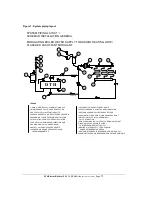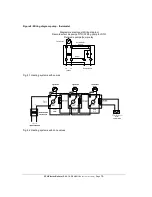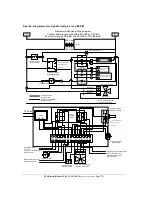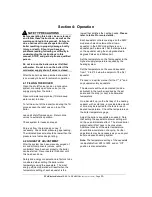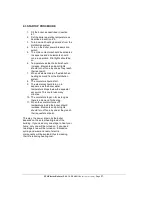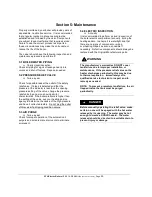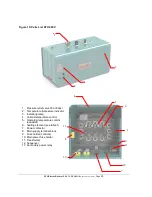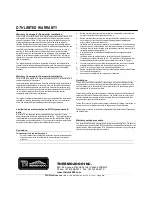
DTH Electric Boilers USE & CARE MANUAL
(Revision June 2014)
, Page
20.
Section 4: Operation
Before operating this boiler, be sure to read
and follow these instructions, as well as the
warnings printed in this manual. Failure to
do so can result in unsafe operation of the
boiler resulting in property damage, bodily
injury, or death. Should you have any
problems reading, following or difficulty in
understanding the instructions in this
manual, STOP, and get help from a qualified
person.
Do not turn on the boiler unless it is filled
with water. Do not turn on the boiler if the
cold water supply shut-off valve is closed.
After the boiler has been plumbed and wired, it
is now ready to be set for automatic operation.
4.1 FILLING THE BOILER
Open the shutoff valve (and on a zone valve
system, manually open zone valve) on the
supply piping from the boiler.
Open cold water supply valve (fill or makeup
water valve) to boiler.
To let the air out of the boiler tank during the fill
process open the relief valve on top of the
boiler.
Leave all shutoff valves open. Return zone
valves to automatic operation.
Check system for leaks and repair.
Purge air from the remaining zones, if
necessary. Check boiler pressure gage reading.
The indicated pressure should be lower than the
pressure relief valve design rating.
4.2 AQUASTAT ADJUSTMENT
After the system has been manually purged of
air, and all components (valves, vents,
controllers) have been set properly, the boiler
can be started. Never operate this boiler until
this has been done.
Safety and energy conservation are factors to be
considered when setting the boiler water
temperature using the aquastats. The most
energy-efficient operation will result when the
temperature setting of each aquastat is the
lowest that satisfies the heating needs.
Please
refer to table 5 for more details.
Each aquastat controls one stage (in the 240V
model each electric element has it own
aquastat; in the 600V model there is one
aquastat per 3 elements). Set the temperature
on the aquastat using the knob graduated in
degrees Celsius and Fahrenheit.
Set the temperature on the first aquastat to the
highest supply temperature required by the
heating system.
Set the temperature on the second aquastat
from 1°F to 5°F below the setpoint of the first
aquastat.
Proceed in a similar manner for the 3
rd
, 4
th
and
any supplementary aquastats.
The elements will thus be activated (and de-
activated) in the number required by the set
points and the drop (or rise) in boiler water
temperature.
On initial start up (on the first day of the heating
season) with a cold tank, a considerable amount
of time may be required for the tank to reach
desired temperature. Check the temperature on
the boiler temperature gage.
Adjust the boiler’s aquastats as needed. Note
that setting the aquastat to a lower setting will
not have an immediate effect. The stored boiler
water heat will first have to be consumed.
Additional checks of the water temperature
should follow completion of a cycle. Further
adjustments may be necessary as you use your
boiler and space heating system.
Note: The temperature setting of the aquastats
is adjustable from 50F to 190F and an “Off”
position is also selectable.
SAFETY PRECAUTIONS
!












